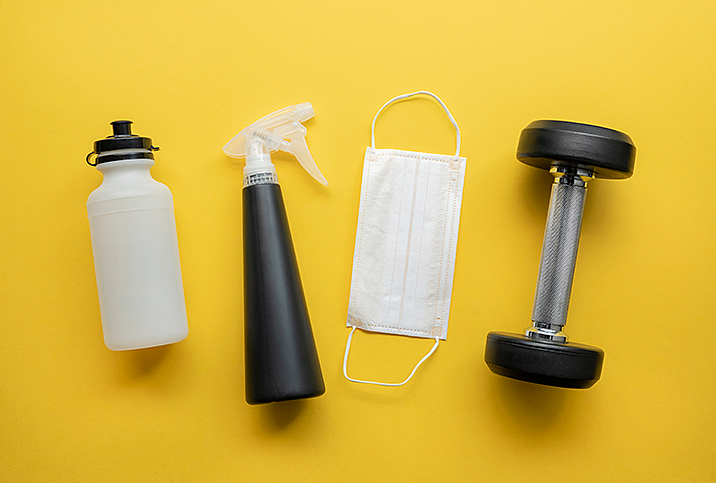Returning to the Gym Safely, Post-Lockdown

Trainers and healthcare professionals have some words of advice for anyone hefting weights or stepping onto an elliptical machine post-lockdown: easy does it. Exercising after a long hiatus such as the months-long lockdown wrought by COVID-19 can spell trouble for anyone doing too much too soon.
The value of exercise
Wanting to resume a pre-pandemic workout regimen as quickly as possible is understandable. Exercise dials up the brain's production of endorphins, improving the mood and engendering a sense of well-being. It also boosts cognitive function, according to researchers, and helps ward off disease. A woman whose weekly workout regimen is equivalent to a brisk, seven-hour walk is half as likely to develop colon cancer as a woman who exercises each week about the equivalent of a slow, hour-long walk, according to a 2009 Harvard Medical School study. Exercise has been found to improve sexual function as well.
Not exercising should not be an option, even for people who have been sick. When you stop working out for a time, the muscles, cardiovascular system and weight all change, healthcare professionals say. Most people will lose muscle strength as fast as 3 percent per day, with noticeable loss coming after two to three weeks. No matter how slow an approach a person may need to get exercising again, it's vital to take that first step.
Overexertion, a common cause of injury
Keep expectations in check when returning to a pre-lockdown exercise regimen post-lockdown. Sure, we've all had some lost time, but trying to make up for it all at once can lead to injury, illness or worse.
"One of the most common reasons people get injured is because they overexert themselves when their level of fitness is not where they want it to be," said Irvin Sulapas, a sports-medicine physician at the Baylor College of Medicine.
The risks of overexertion are especially high for those who have been or still are infected with COVID-19. More than other viruses, the coronavirus is capable of causing blood clots or myocarditis, which is an inflammation of the heart muscle, according to the Mayo Clinic. Myocarditis is a significant cause of sudden cardiac death even in competitive athletes, according to a study published in JAMA Cardiology.
If you or a loved one has suffered a severe illness or been hospitalized, be sure to consult a physician before starting an exercise program. Then work up gradually to pre-pandemic levels. Go slow, use caution and be aware of personal limits.
Tips for safe post-pandemic exercise
Sulapas offers a few tips on how to prevent injury upon resuming exercising post-pandemic:
- Do a proper warm-up and cooldown.
- Practice correct form.
- Start slow.
- Exercise outdoors for the additional safety of social distancing.
- Wear a mask indoors.
Monitoring exercise and setting reasonable goals are good precautions as well, and you should always take into account preexisting conditions. Athletes resuming training after a bout with COVID-19 might want to consider these specific guidelines from the British Journal of Sports Medicine.
Just don't make getting back to exercising so fraught and stressful you don't want to do it, trainers advise. Listen to podcasts or music. Have fun. And enjoy the freedom you have to exercise where and when you want, and to set and meet your own goals in your own time.


















